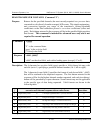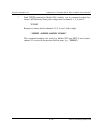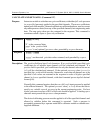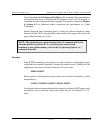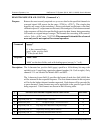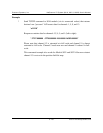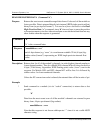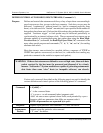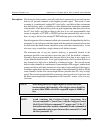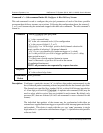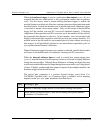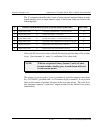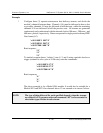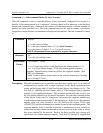
Pressure Systems, Inc. NetScanner™ System (9016, 9021, & 9022) User’s Manual
www.PressureSystems.com
3 - 32
NOTE: When using hardware trigger inputs to synchronize data
stream outputs, the frequency of the trigger source should be
no more than 200Hz even if the requested output is 100Hz or
less.
NOTE: Avoid confusing this Configure/Control Autonomous Host
Streams command ‘c’ (lower case c) with the Configure/Control
Multi-Point Calibration command ‘C’ (upper case C). Like ‘C’,
but unlike most other module commands, all sub-commands of
this command require a space between the command id (‘c’) and
the first parameter (ii).
Description: The firmware of any module, once fully initialized, continuously scans and converts
data for all pressure channels at the highest possible speed. The result of such
scanning is a continuously updated EU data buffer, available to three concurrent
host data delivery tasks, or available to other standard data acquisition commands
in the module. Each host delivery task can grab engineering-unit data values from
the EU data buffer and deliver them to the host in its own programmable data
stream (a sequence of TCP/IP or UDP/IP packets that autonomously arrive in the
host, as long as the host has enough TCP/IP buffering space to hold them).
Special augments of this command, called sub-commands (distinguished by the first
parameter ii) can configure each data stream with the particular channels whose data
are delivered, the datum format, the delivery rate, and other characteristics. It can
also start, stop, or undefine a single stream or all defined streams.
The maximum rate of any one stream’s delivery is practically limited to the
maximum possible scan and data conversion rate of all the module’s channels.
Normally, these programmable host streams deliver host data at rates equal to or
slower than this natural cycle. For a typical application, the first stream delivers a
few channels at a high rate as defined by a hardware trigger. The second stream
delivers other channels at a medium rate (some multiple of the trigger), and the third
stream can deliver still other channels at a slow rate (a larger multiple of the trigger).
In another application, the three streams might all be programmed to deliver all the
same channels, but the first stream might deliver pressure data (EU only) at high
speed. The second stream might deliver pressure counts or volts at a slower rate, and
the third stream might deliver temperature in all forms (EU, counts, volts) at a very
slow rate.



